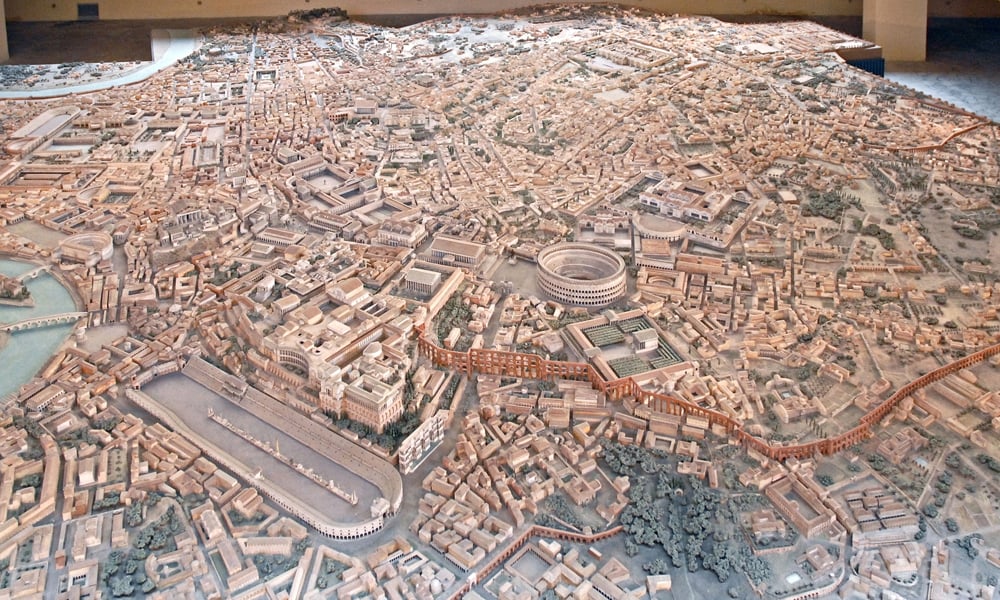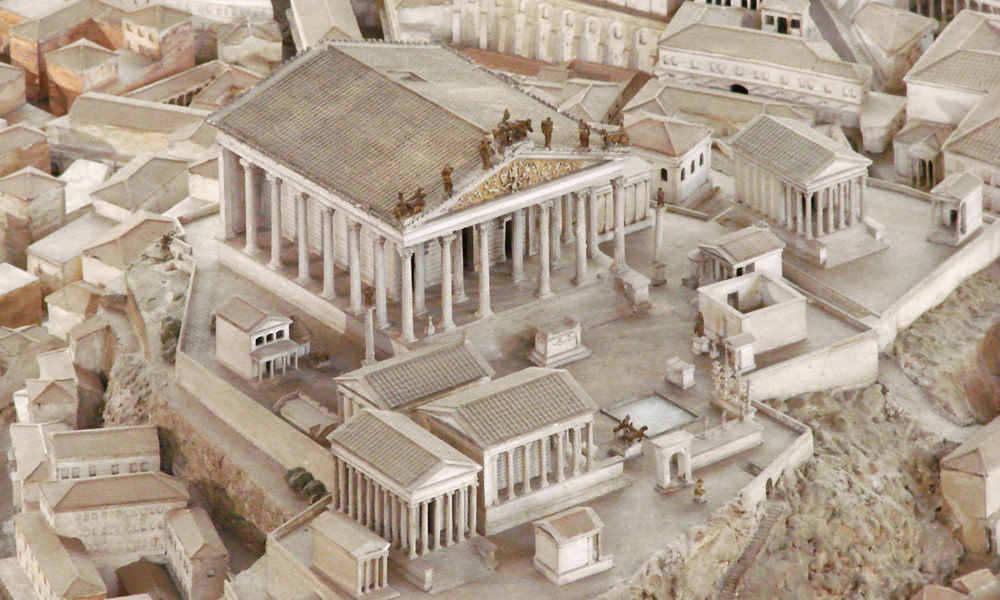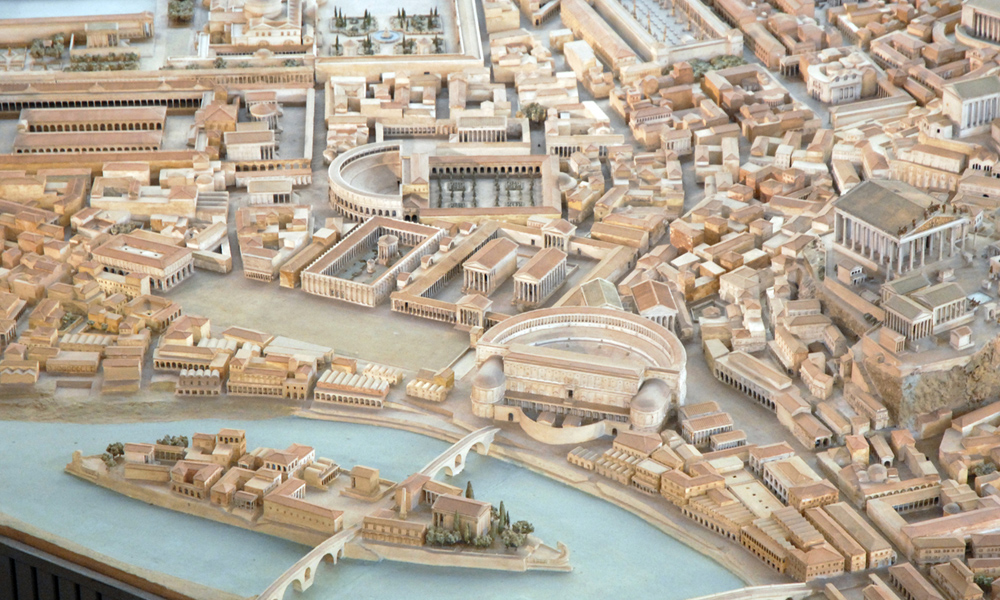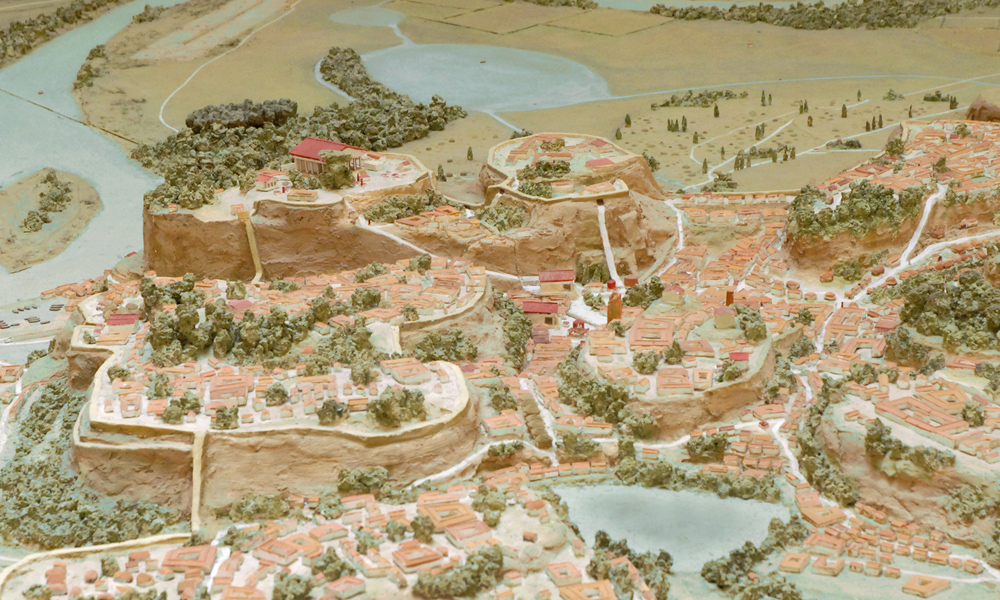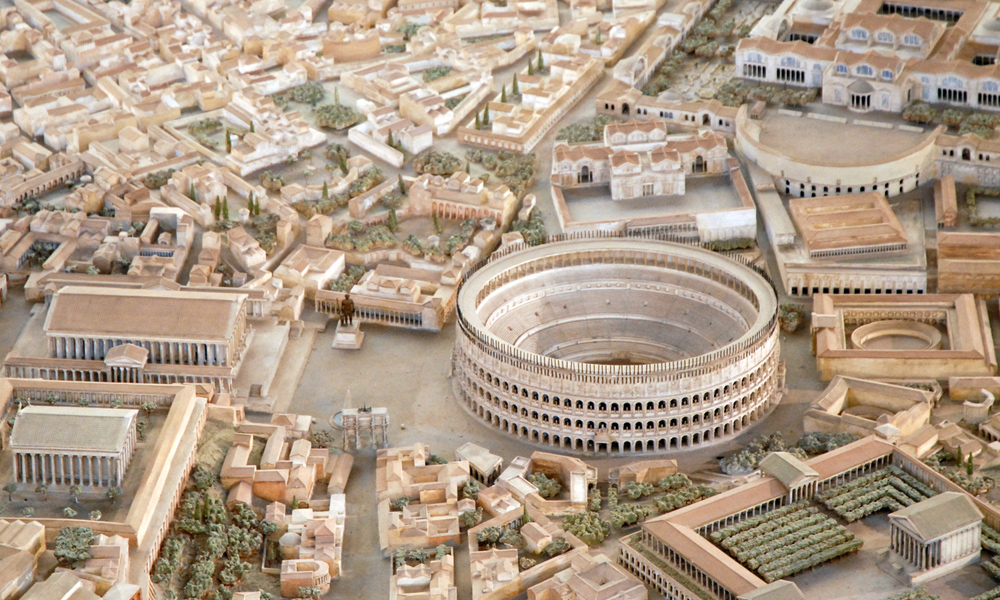For most of us, time travel is limited to works of fiction and the Wayback Machine. Italian architect Italo Gismondi is making it more of a reality with what we presume to be his life’s work, Plastico di Roma Imperiale. Plastico di Roma Imperiale–aka Model of Imperial Rome–is a 1:250 scale model of 4th century Ancient Rome that was started in 1935 on commission from Mussolini. The model was built out of plaster using information from the Forma Urbis Romae (the massive marble map of ancient Rome made in the early III century AD) with data from archaeological remains and ancient sources and wasn’t completed until 1971, more than 35 years later. To this day, this model is the most accurate depiction of ancient Rome during the time of Constantine, which is probably why it’s appeared in things like Rome Reborn and Gladiator. Plastico di Roma Imperiale can be seen at the Museum of Roman Civilization in Rome. Unfortunately, the museum is currently closed for renovations, but you can take a trip through the model with Jean-Pierre Dalbéra photos on Flickr.
More Travel

The Charm of Canandaigua, New York
The perfect friend trip for 2026.

Low-Season Destinations to Visit in the Fall and Winter
Avoid the crowds. Travel on the low.

The Coolest Trailer Hotel Accommodations Around the World
Small spaces. Big vibes.

